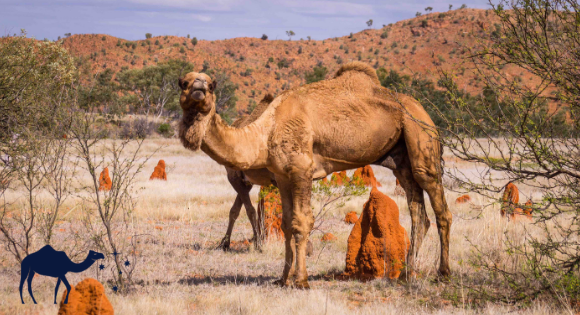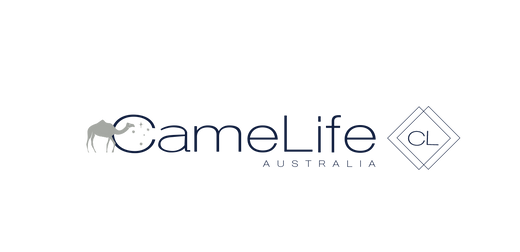The Strange Story of Australia’s Camels

Some Camel History for Word Camel Day
With World Camel Day approaching, perhaps it’s time to reflect on how Australia came to have the world’s largest population of feral camels. Perhaps we should consider the huge contribution of camels and cameleers made to opening up Australia. And maybe we should contemplate how we might humanely solve the problems they bring.
Drive the Stuart Highway and you will surely come across camels. No, you won’t be hallucinating; camels may be about as Australian as polar bears, but there are perhaps upwards of a million feral camels wandering outback Australia. The government-supported program that monitors invasive feral species Feral Scan estimates the current feral camel population to be between one and 1.2 million, with this amount reportedly doubling within ten years. The Federal Government places the number nearer 450,000, but the truth is nobody really knows; there are an awful lot of feral camels out there. So why do we have so many non-native animals here?
Camels, Cameleers and Pioneers

To find the answer, you have to investigate the pioneering days of characters like Stuart. As early as 1822, the geographer Conrad Malte-Brun suggested bringing camels to Australia to explore beyond the coastal fringe. The first camel arrived from the Canary Islands in 1840, but it wasn’t until the Burke and Wills expedition of 1860 that camels really took off.
The impact made by camels and their handlers was considerable. In her co-authored book Australia’s Muslim Cameleers: Pioneers of the Inland, 1860s-1930s, Anna Kenny recognises the significant cultural and economic contributions that cameleers and their camels made to Australian society. “The cameleers opened lines of supply, transport and communication between isolated settlements, making the economic development of arid Australia possible. They also enriched the cultural landscape.”
To get an idea of the scale of the camel business, between 1870 and 1920, as many as 20,000 camels were imported into Australia from the Arabian Peninsula, India and Afghanistan. Alongside them came at least 2,000 handlers, or cameleers, from the same regions. Camel studs were established to grow a domestic herd; by some estimates put the working camel population at 150,000 in 1920.
The camels were mainly dromedaries; single hump camels perfectly adapted to living in low and arid conditions. They were ideally suited to the climate of the Australian interior: they could go weeks without water, and they had the stamina and strength to carry their loads and riders across what were often highly exposed, fiercely hot landscapes.

For half a century, camels were a fixture of outback life carrying wool, water, telegraph poles and railway sleepers, tea and tobacco. Aboriginals embraced the camel and incorporate camel hair into their artefacts. But progress brought better stock routes, railways and trucks arrived and the camels became less and less necessary as pack animals. The working camel’s last hurrah was maintaining the Rabbit Proof Fence on the Western Australian border. As the became redundant, thousands of camels were simply released into the bush. Of course, they thrived.
Today, little is left to remind us of the cameleers role in opening up The Outback. Broken Hill has its Afghan mosque, The Ghan is named in honour of the Afghan cameleers, who came to be known as ‘Ghans’. Check out this video from Broken Hill Museum to find out more of the life of cameleers.
The Camel Problem
All is not well; Australia has a serious feral camel problem that it has yet to solve. Grazing camels have a profound bearing on indigenous wildlife, stripping vegetation and destroying water holes. They do immense damage to outback communities, wrecking water storage tanks and pipelines. Simon Reeve, the TV explored describes Australian camels as “almost uniquely brilliant at surviving the conditions in the outback. Introducing them was short-term genius and long-term disaster.”
The Federal Government has attempted to manage the camel population. From 2009-13, some 160,000 camels were culled, mostly shot from a helicopter and left to die. This blunt and brutal approach was rightly heavily criticised, but the answers aren’t simple. A passionate vegan posted on our Facebook page that she would like to see a program of de-sexing male camels, a totally impractical idea given the distances and terrain involved. This Northern Territory Government film explains more.
Here at CameLife, we believe that there are ways to manage Australia’s camel population. Dairying is undoubtedly one, but so too is a camel meat industry. The health benefits of camel milk are proven and, if camel milk is to be the next superfood, Australia really should be the centre of a global camel dairying industry. This will take more than the efforts of a few isolated camel dairying entrepreneurs; it needs big investment into the logistics to get the retail price to a competitive level.
As a cosmetics manufacturer, we are a tiny user of camel milk. But producing high added value products from camel milk gives us space to promote the wider benefits of camel milk without the pressures of primary production. As World Camel Day, we really should be focussing on the Australian camel problem and how to solve it humanely and sustainably.
With thanks to Ben Lerwill & BBC Travel





Leave a comment